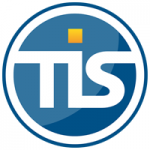| 25-10-2016 | Carlo de Meijer |
 In one of my earlier blogs I wrote that we are beyond the hype of blockchain and distributed ledger technology. Support in the financial industry and beyond for this technology is accelerating in a rapid way. A lot of time and money is now invested into blockchain and its applications.
In one of my earlier blogs I wrote that we are beyond the hype of blockchain and distributed ledger technology. Support in the financial industry and beyond for this technology is accelerating in a rapid way. A lot of time and money is now invested into blockchain and its applications.
“Distributed ledger technology is set to move out of the test environment and into the wild next year, with nearly two thirds of banks expecting to be in production with full-scale, commercial blockchain projects by 2019”, according to recent research from IBM.
If so, that would mean much earlier than the 2020 to 2025 period that was earlier predicted for mass adoption of blockchain technology.
Collaborative near real-world examples
Financial institutions, technology companies as well as start-ups are increasingly collaborating on projects and pilots (or are planning to do so) to use distributed ledger/blockchain technology in trade finance, payments and securities. Next to existing platforms such as Ripple (payments), there is a growing number of collaborative initiatives including the Distributed Ledger Group (R3CEV) and the Hyper Ledger Project (Linux Foundation) (see earlier blogs). This could really accelerate the whole process towards mass adoption.
The first collaborative near real-world tangible use cases and practical applications of distributed ledgers in the financial industry are now being brought to the open. And more are expected soon. Here follows a number of interesting examples of actual projects, initiatives and trials. Main question is: will they be viable in the long run?
R3CEV
Credit Suisse (syndicated loans)
Led by Credit Suisse and the bank-backed blockchain consortium R3CEV, a group of seven member banks (BBVA, Danske Bank, Royal Bank of Scotland, Scotiabank, Société Générale, State Street, US Bank and Wells Fargo) and a number of buy-side firms have started a new initiative to apply distributed ledger technology to overhaul “antiquated” and costly manual intervention in the global syndicated loans market. Goal is that in the future, syndicated loan data processing can be done exclusively on the distributed ledger, eliminating the cost for each market participant to maintain its own separate lending system. The Swiss bank is working with Synaps Loans (a joint venture created earlier this year through a partnership between smart contract vendor Symbiont and loan settlement platform provider Ipreo), on a proof-of-concept (PoC) which will run through the end of this year. Through Synaps, loan investors have direct access to an authoritative system of records for syndicated loan data. By connecting a network of agent banks through blockchain, faster and more certain settlements in the syndicated loans market can be achieved. This allows immediate savings by reducing manual reviews, data re-entry and systems reconciliation.
R3CEV and eight member banks (treasury bond trading)
Working under the R3CEV flag, a group of eight member banks have successfully tested a distributed ledger prototype for bond transactions. Thereby they used an implementation of Intel’s proprietary distributed ledger platform, Sawtooth Lake, for the trial. The platform featured advanced smart contract functionality, enabling trading, matching and settlement of US treasury bonds on-chain, as well as automated coupon payments and redemption based on network time and third party data sources. The partners used physical, non-cloud-based nodes hosted across the US, Canada, Asia, Australia and Europe to interact and simulate US treasury trading on the ledger. In addition, the technology enabled an on-chain identity registry to facilitate the permissioning of validators and transactors, and the association of those roles to different organisations. Intel is now donating the bond-related transaction families developed for the trial to the Hyperledger Project.
R3CEV and 15 member banks (Letter of Credit)
R3CEV and 15 of its consortium member banks successfully completed a number of prototypes using distributed ledger technology for trade finance purposes. The involved member banks in the trials (including Barclays, BNP Paribas, Commonwealth Bank of Australia, Danske Bank, ING Bank, Intesa Sanpaolo, Natxis, Nordea, Scotiabank, UBS, UniCredit, US Bank and Wells Fargo), designed and used so-called smart contracts on R3CEV’s Corda distributed ledger platform to process accounts receivable (AR) purchase transactions, invoice financing or factoring, and letter of credit (LC) transactions. Estimates suggest that “such technology has the scope to reduce operational and compliance costs of paper-based trade financing by 10 to 15% and provide a platform for banks to grow revenues by as much as 15%”.
R3CEV and 40 member banks (Commercial Paper trading)
R3CEV and 40 member banks have successfully completed a number of cloud-based ledger experiments. The (then!) 40 member banks were connected to five different R3CEV managed private distributed ledger technologies. Objective was to test, compare and evaluate the strengths and weakness of different blockchain offerings on the market today. The banks thereby modelled a series of smart contracts that were programmed to manage Commercial Paper transactions including facilitate issuance, secondary trading and redemption of Commercial Paper. Each of the distributed ledgers thereby ran a smart contract based on identical business logic to enable the banks to accurately compare the difference in performance between them. These experiments followed a test in January to unite eleven global financial institutions on a private distributed ledger provided by Ethereum.
Barclays and R3CEV (smart contracts repository)
The R3CEV blockchain consortium is working with Barclays Bank, ISDA and legal and academic bodies to explore the development of a repository of master templates for smart contracts when trading and managing securities on distributed and shared ledgers. The new group, has been set up to address the challenges of developing master templates for smart contracts, with an initial focus on how they could be implemented within existing legal and regulatory frameworks. Earlier this year, Barclays Bank demonstrated a Smart Contract Templates prototype creating an ISDA agreement and an interest rate swap trade that then executed as a smart contract on R3CEV’s Corda platform.
Credit Suisse and others (reference data management)
Coordinated by Credit Suisse and working with R3CEV and capital markets tech startup Axoni, seven buy-side and sell-side firms (including Citi and HSBC) have completed a multi-months proof-of-concept (PoC) exercise, which aimed to simplify reference data processes through a distributed ledger prototype. The prototype was created using proprietary distributed ledger software of Axoni (a distributed fintech solutions company) to simulate the collaborative management of reference data, as well as the use of that data for corporate bond issuance. Participants could interact with reference data after issuance, with any proposed changes requiring validation by the underwriter to ensure the ledger provided a single, immutable record of all data related to the bond. The results show how blockchain technology could be used to allow regulators and network participants to view in real time which parties on the ledger have created, issued and proposed amendments to the data record. “This may remove the need to reconcile multiple copies of data and help reduce duplicate reference data costs and improve data latency which will ultimately lower costs and reduce operational risks”, according to Credit Suisse.
Hyperledger Project
UBS and IBM (trade finance)
Swiss bank UBS and IBM have designed a project that replicates the entire lifecycle of an international trade transaction on Hyperledger`s Fabric blockchain. The trade finance project that is still in its earliest stages and focuses on just a single aspect of the process, combines payment transactions, foreign exchange payments and more, into one single, elaborate smart contract. By programming that process into a smart contract on Hyperledger, UBS “expects to be able to cut the processing time down from seven days to one hour”. Besides the letter of credit process, the project also aims to incorporate the account opening process, to build a user-friendly interface “capable to operate on the go, from a transportation vehicle for example”. It remains unclear how long it will take to complete the international trade project, according to UBS.
CLS (payments netting service)
CLS, the multi-bank foreign exchange counterparty, is to build a payments netting service for trades settled outside the core membership thereby using distributed ledger technology based on the Hyperledger Fabric. CLS wants to use its position to standardise and expand bilateral payment netting capabilities for the entire FX market, eliminating intra-day liquidity demands caused by inefficient “bespoke” approaches to netting throughout the market. The company has signed up 14 banks as early adopters of the proposed service, which will accept FX instructions for six products, including non-deliverable forwards (NDFs), and 24 currencies over existing SWIFT-based channels. Participants will also have the option of connecting directly to the platform via a permissioned distributed ledger, administered by CLS using Hyperledger Fabric. CLS will be working with IBM to build new infrastructure. The new service will be delivered in a phased approach – subject to regulatory approval – beginning with a payment netting service for FX spot, forwards, NDFs, swaps, tomorrow/next day and same-day trades across the 18 currencies CLS currently settles, as well as the Chinese renminbi (offshore), Russian rouble, Polish zloty, Turkish lira, Thai baht and Czech koruna.
Bank of America Merrill Lynch/HSBC (Letter of Credit)
A bank consortium consisting of Bank of America Merrill Lynch, HSBC and the Infocomm Development Authority (IDA) of Singapore successfully applied distributed ledger technology to replace paper-based letters of credit (LCs) in trade finance transactions and streamline global trade. They thereby used the open source Hyperledger Project software for the prototype app, supported by IBM Research and IBM Global Business Services. By sharing information between exporters, importers and their respective banks on a private distributed ledger, this enabled them to execute a trade deal automatically through a series of digital smart contracts. The partners now plan to conduct further testing on the concept’s commercial application with selected partners such as corporates and shippers. Their challenge is to take this from concept to commercial use “making it quicker and easier for businesses to connect with new suppliers and customers at home and abroad.”
BTMU and IBM (contract management and trade finance)
The Bank of Tokyo-Mitsubishi UFJ (BTMU) and IBM are collaborating to use blockchain technologies for the design, management and execution of contracts among business partners. They thereby make use of the Hyperledger Project’s open-source platform to automate business transactions with each other on the IBM Cloud. Both partners have built a prototype of smart contracts on a blockchain that should improve the efficiency and accountability of service level agreements in multi-party business interactions. To help improve efficiency, the two will monitor delivery and usage of equipment with a sensor that embeds information into the blockchain. This will then automate invoicing and payment processes between the two companies. BTMU plans to begin using it to manage contracts within their business in fiscal year 2017.
JPX and IBM (post-trade settlement and proxy voting)
Officials of the Japan Exchange Group (JPX) and IBM Japan recently announced advanced plans to test the use of blockchain technology for post-trade settlement and proxy voting. The exchange will investigate how blockchain technology could be used to create new systems for the trading of low-liquidity assets. They thereby will use the framework provided by the Hyper Ledger Project. JPX is also working with Nomura Research Institute (NRI) and several major financial institutions (including SBI Securities, Mitsubishi UFJ Financial Group and blockchain specialist Currency Port) to test the use of blockchain technology for future applications across the securities industry. Until the end of June, the partners have examined various business scenarios and validation items involving distributed ledger technology and prepare prototype systems based on those scenarios.
Credit Mutuel Arkea (verify customer IDs)
Credit Mutuel Arkea has completed a pilot of an operational permissioned blockchain network to verify customer “bona fides” in compliance with Know Your Customer (KYC) requirements. Using the open-source Hyperledger Project fabric, the software “tapped into all valid existing evidence” already stored in the bank’s multiple systems of record such as from mortgage applications or life insurance enrolment and bank accounts opening. Following the success of the initial pilot, Credit Mutual Arkea plans to work with IBM to integrate the different silos of customer data across the bank to create a single ID data chain that can be used across all business processes.
Ripple
The Ripple network recently announced that seven banks including Santander, CIBC, UniCredit, UBS, ReiseBank, National Bank of Abu Dhabi and ATB Financial of Edmonton “had made a breakthrough by being among the first financial institutions in the world to move real money across borders using blockchain-based distributed ledger technology provided by Ripple”. Focus is thereby on international, low-value, high-volume and velocity payments (as these can often be expensive and not profitable for banks). The seven banks are all planning to deploy Ripple commercially, while most having already moved real money via the network.
In the meantime Ripple has signed up several major banks to a steering group on the use of distributed financial technology for global payments (including names like: Bank of America Merrill Lynch, Santander, UniCredit, Standard Chartered, Westpac, and Royal Bank of Canada). The creation of the Global Payments Steering Group (GPSG), is significant because this represents the first time that major banks have formulated policies to govern the transfer of money across borders using blockchain. The group will oversee the creation and maintenance of Ripple payment transaction rules, formalised standards for activity using Ripple, and other actions to support the implementation of Ripple payment capabilities. This Group might become a great competitor for SWIFT.
Standard Chartered (trade finance)
The first bank-developed blockchain platform for trade finance was the product of a partnership between Standard Chartered, the Development Bank of Singapore (DBS) and the Infocomm Development Authority of Singapore (IDA), the government’s IT and communications arm. They developed a blockchain-based invoice trading platform (code-named TradeSafe) that uses the distributed ledger technology developed by Ripple. Invoices and bills of ladings are allocated unique identifiers and stored on this distributed ledger. The use of unique identifiers enables users to view the status of a particular invoice/bill, but also reduces the risk of duplicate financing of the same invoice/bill. Further, to maintain confidentiality, users are allocated encrypted identities.
ATB Financial and Reisebank (international interbank payment)
SAP (the world’s third largest independent software manufacturer), partnered with Ripple and two banks, ATB Financial (Canada) and Reisebank (Germany), to demonstrate how banks can improve the efficiency of cross-border payments by using blockchain technology. For that SAP and Ripple designed and built a proof-of-concept (PoC) prototype based on this technology (thereby connecting SAP HANA Cloud, the open platform as a service (SaaS), and the SAP Payment Engine application, which centralizes payment processing in one solution with Ripple’s network of enterprise blockchain solutions).
This prototype was used to send the first international interbank blockchain payment of CAD $ 1,000 from ATB Financial to Reisebank. With parties representing different continents, this cross border payment transfer using blockchain technology was completed successfully. The payment which would normally have taken between two to six business days to process “was now completed in around 20 seconds, so nearly instantaneous”. In addition for being far quicker, this blockchain payment transaction cost a fraction of current transaction rates.
Japanese bank consortium (real-time settlement and domestic fund transfers)
A consortium of 15 Japanese banks are to work with blockchain joint venture SBI Ripple Asia, to build a new payments platform for 24 hours real-time settlement and domestic fund transfers, thereby using Ripple’s blockchain technology. This should firmly reduce the fees currently paid by banks for performing cross-border transactions and pave the way for the arrival of real-time domestic and cross-border payments. Initial participants include Bank of Yokohama and SBI Sumishin Net Bank (SBI Holdings owns part of it). It is expected that the size of the consortium will increase to 30 banks, and that the new service will go live in Spring 2017.
Santander (cross border payments)
Santander has become the first major UK bank (and the first bank in the world) to use Ripple for cross border payments. Starting in May Santander has begun piloting a Ripple-powered payments app built on the blockchain technology, that facilitates international payments. The app, currently being tested by bank staffers, connects to Apple Pay, and allows cross-border payments to be made between GBP 10 and GBP 10.000, around the clock and at any time of the day, using Touch ID. Funds appear in the recipient’s account the next working day. These transfers can be made from sterling to euros and US dollars (currently payments made in euros can be sent to 21 countries and US dollar payments to America only). The results of this trial will be used to assess whether to bring this technology to its customer base at a later date.
Foundational challenges
When it comes to blockchain, we may say that we are beyond the hype. The many experiments, proof of concepts and other real-world trials with blockchain technology are all evidence of that. And we will see many more of them this year and beyond. But quoting Terry Roche of Tabb Group in a recent blog the technology now needs to deliver real-world benefits.
“While blockchain’s promises remain bright, however, there are (still) numerous foundational challenges (process, technical, community, etc.) that the financial services industry needs to overcome to get a beneficial blockchain world.”
While all these projects ask a lot of investments, not all of them may prove to be viable in the end. The financial industry however has no endless funds available to explore endless options. In today’s constrained technology marketplace, there needs to be a defined and realizable gain associated with any project for firms to fund it. That is why the industry should prevent dead-end options and only focus on viable applications that have a long-term future and suits best in their business model!

Carlo de Meijer
Economist and researcher
 Dear community members, we would like to bring this TIS webinar under your attention. On November 3th between 04:00 and 04:30 PM TIS will host : SEPA in Sweden – The key to a smooth transition. We think it will be an interesting session and hope to hear your reactions afterwards!
Dear community members, we would like to bring this TIS webinar under your attention. On November 3th between 04:00 and 04:30 PM TIS will host : SEPA in Sweden – The key to a smooth transition. We think it will be an interesting session and hope to hear your reactions afterwards!
 A few interesting reports came out in the last couple of weeks: ‘Journeys to Treasury’, ‘Treasury Systems Guide 2016’ and ‘The Future of Treasury Management Systems’. We did some reading and decided we wanted to share these reports with the treasuryXL community. Let us know what you think! Did you see a report, article or something else that could be interesting for the treasuryXL community? Don’t forget to share!
A few interesting reports came out in the last couple of weeks: ‘Journeys to Treasury’, ‘Treasury Systems Guide 2016’ and ‘The Future of Treasury Management Systems’. We did some reading and decided we wanted to share these reports with the treasuryXL community. Let us know what you think! Did you see a report, article or something else that could be interesting for the treasuryXL community? Don’t forget to share! In one of my earlier blogs I wrote that we are beyond the hype of blockchain and distributed ledger technology. Support in the financial industry and beyond for this technology is accelerating in a rapid way. A lot of time and money is now invested into blockchain and its applications.
In one of my earlier blogs I wrote that we are beyond the hype of blockchain and distributed ledger technology. Support in the financial industry and beyond for this technology is accelerating in a rapid way. A lot of time and money is now invested into blockchain and its applications.


 Autumn has come and it’s time to visit events, expand your network and try to learn some new things to start the working season right. We have selected some events and education programmes of which we think you would appreciate them. Enjoy and don’t forget to let us know which events you have been visiting or education programmes you have been following. We are curious to hear your opinion on them!
Autumn has come and it’s time to visit events, expand your network and try to learn some new things to start the working season right. We have selected some events and education programmes of which we think you would appreciate them. Enjoy and don’t forget to let us know which events you have been visiting or education programmes you have been following. We are curious to hear your opinion on them! De Europese Commissie heeft van tien lidstaten de opdracht gekregen om voor het eind van het jaar een richtlijn voor de Europese Tobintaks op te stellen. Oostenrijk, België, Frankrijk, Duitsland, Griekenland, Italië, Portugal, Slowakije, Slovenië en Spanje zijn het op 10 oktober eens geworden, de Europese versie van de transactie belasting gaat er komen. We vroegen Lionel Pavey wat hij hiervan denkt.
De Europese Commissie heeft van tien lidstaten de opdracht gekregen om voor het eind van het jaar een richtlijn voor de Europese Tobintaks op te stellen. Oostenrijk, België, Frankrijk, Duitsland, Griekenland, Italië, Portugal, Slowakije, Slovenië en Spanje zijn het op 10 oktober eens geworden, de Europese versie van de transactie belasting gaat er komen. We vroegen Lionel Pavey wat hij hiervan denkt.

 Maarten Verheul – Treasury Consultant
Maarten Verheul – Treasury Consultant | 18-10-2016 |
| 18-10-2016 | 
 In my work as a treasury recruiter I speak with financial managers on a regular basis about their funding. Both in the funding strategy as in the execution hereof, it can be noticed that entrepreneurs and their CFO’s intensify their search for the proper partner. This is what I hear so far:
In my work as a treasury recruiter I speak with financial managers on a regular basis about their funding. Both in the funding strategy as in the execution hereof, it can be noticed that entrepreneurs and their CFO’s intensify their search for the proper partner. This is what I hear so far:

